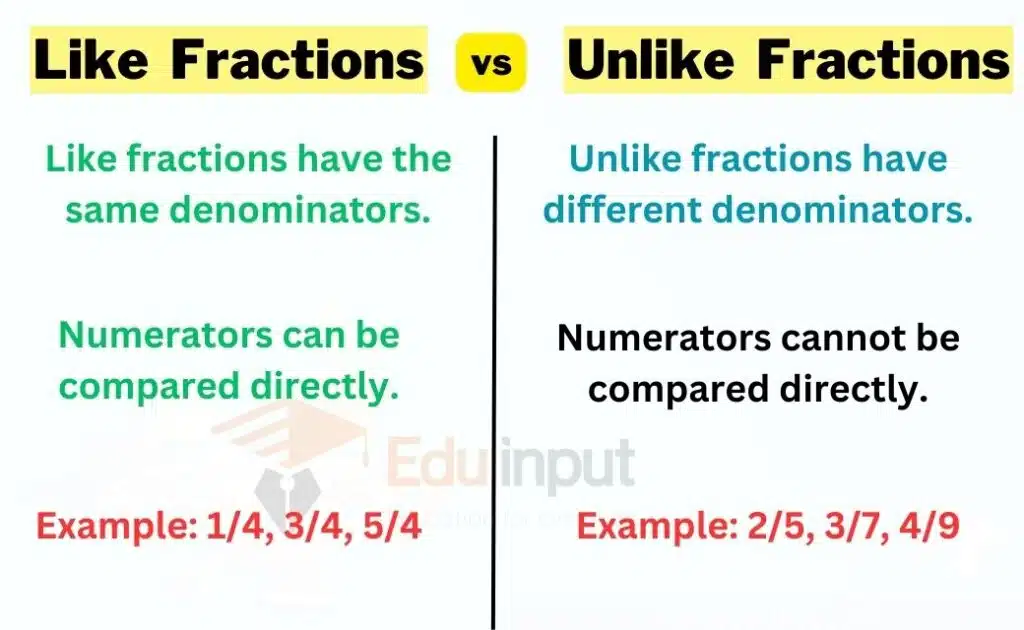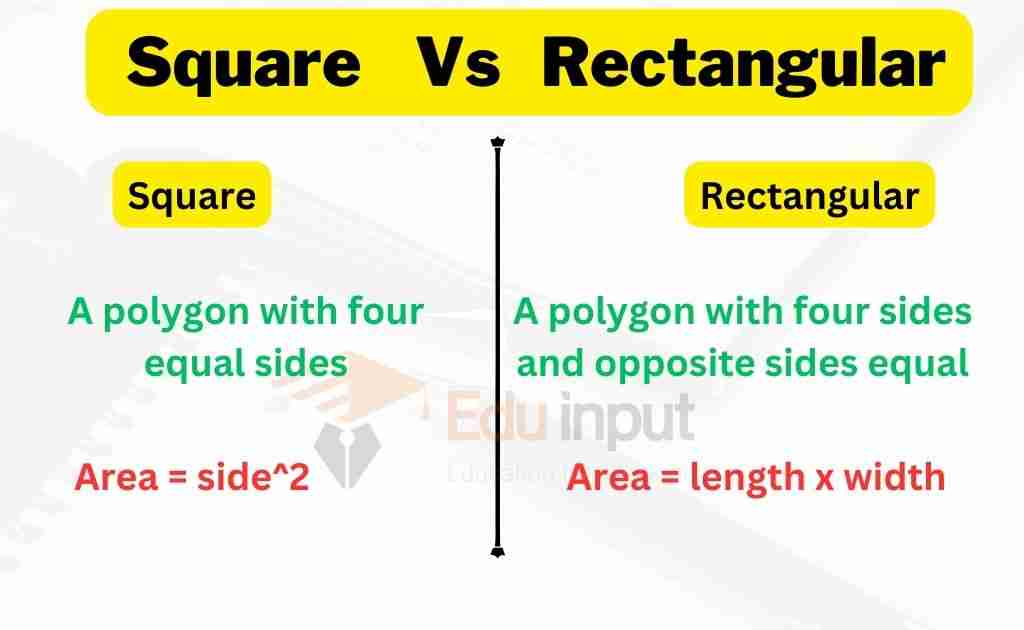Difference Between Like and Unlike Fractions
May 30, 2023
The key difference between like fractions and unlike fractions in a single sentence: Like fractions have the same denominators, while unlike fractions have different denominators.

Like Fractions Vs Unlike Fractions
| Like Fractions | Unlike Fractions |
| Have the same denominators | Have different denominators |
| Numerators can be compared directly | Numerators cannot be compared directly |
| Addition and subtraction can be performed directly | Need to find a common denominator before addition or subtraction |
| Can be easily combined or compared | Need to be converted to like fractions before combining or comparing |
| Example: 1/4, 3/4, 5/4 | Example: 2/5, 3/7, 4/9 |
Difference between like and unlike fractions
Like Fractions:
- Like fractions have the same denominators.
- When the denominators are the same, the fractions have a similar structure and are easier to compare and perform operations on.
- For example, 1/4 and 3/4 are like fractions because they have the same denominator of 4.
Unlike Fractions:
- Unlike fractions have different denominators.
- When the denominators are different, the fractions have a different structure and cannot be compared or operated on directly.
- To compare or perform operations on unlike fractions, they need to be converted into like fractions by finding a common denominator.
- For example, 1/4 and 2/5 are unlike fractions because they have different denominators of 4 and 5, respectively. To compare or add these fractions, we need to find a common denominator, such as 20, and convert them into like fractions (5/20 and 8/20).
File Under:







Leave a Reply